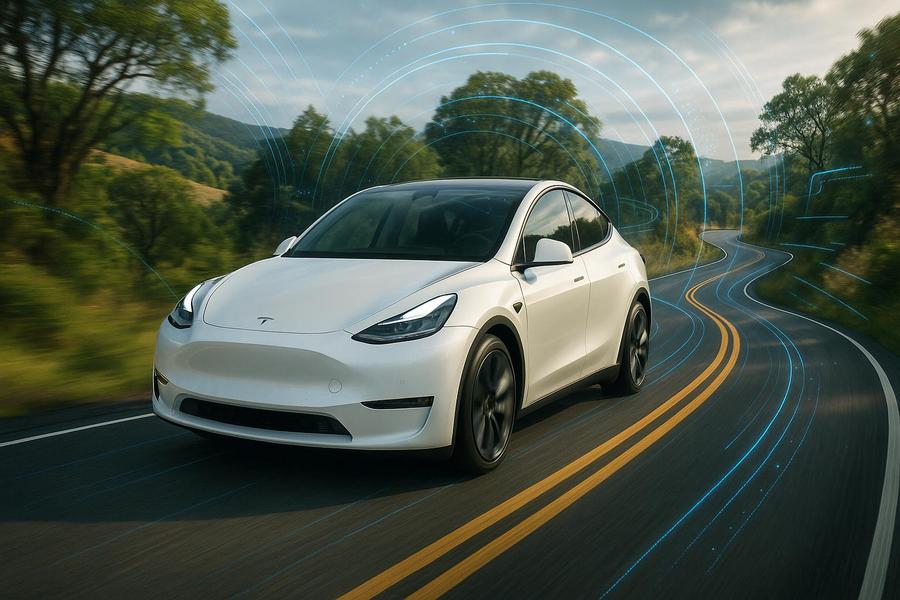Intel has just released its latest breakthrough in artificial intelligence computing hardware, the Gaudi 3 chip, positioning it as a direct challenger to Nvidia’s market dominance with claims of superior performance and cost efficiency.
The new AI accelerator promises a 1.7 times performance advantage over Nvidia’s H100 GPU, according to Intel’s internal benchmarks, while potentially costing half as much to operate when considering total ownership expenses. It’s the tech giant’s boldest move yet in the increasingly competitive AI chip market that Nvidia has commanded with an iron grip.
“The world needs a high-performance, open alternative to the status quo,” said Intel CEO Pat Gelsinger at the company’s AI Everywhere event in Dallas, where he unveiled the new hardware alongside other AI-focused products.
Intel’s aggressive positioning comes at a critical moment. The explosive growth in generative AI has transformed Nvidia into a trillion-dollar company, with its GPUs becoming the de facto standard for training and running large language models. Meanwhile, Intel has struggled to maintain relevance in this booming sector despite its historical dominance in computing chips.
David vs. Goliath in the AI Chip Wars
Can Intel’s claims hold water? The Gaudi 3 accelerator, developed by Habana Labs (which Intel acquired for $2 billion in 2019), is designed specifically for AI workloads with what the company describes as an “innovative architecture.” The chip’s design prioritizes high-bandwidth memory and networking capabilities critical for training complex AI models.
Intel’s benchmarks suggest the Gaudi 3 outperforms Nvidia’s H100 by 40% to 80% on key AI training workloads while consuming less power. Industry analysts, however, remain cautious about these claims. “Vendor benchmarks are notoriously optimistic,” said Patrick Moorhead, founder of Moor Insights & Strategy, who noted that real-world performance often differs significantly from controlled tests.
The timing couldn’t be more crucial for Intel. The company has faced setbacks in recent years, losing market share to AMD in PC processors and struggling to compete with TSMC in manufacturing technology. Just last October, Intel reported a stunning 93% drop in data center chip sales compared to the previous year.
Cost as the Competitive Edge
That said, Intel believes its true advantage lies in economics. The company claims Gaudi 3-based systems will cost approximately half as much to own and operate compared to equivalent Nvidia setups. This value proposition could prove compelling for cloud service providers and enterprises feeling the financial strain of AI infrastructure investments.
“When you look at the total cost of ownership, including power consumption, cooling requirements, and initial hardware costs, the Gaudi 3 presents a compelling alternative,” explained Sandra Rivera, Intel’s executive vice president, during a technical briefing for analysts that showcased the new technology.
Nvidia isn’t standing still, though. The company recently introduced its H200 GPU, scheduled to ship later this year, which promises significant improvements over the H100. This constant leapfrogging makes Intel’s comparative claims potentially short-lived.
The battle for AI chip supremacy has attracted other formidable players as well. AMD has ramped up its efforts with the MI300X accelerator, while cloud giants like Google, Amazon, and Microsoft are developing their own custom AI chips to reduce dependency on external suppliers.
Software: The Missing Piece?
Hardware performance alone won’t decide this race. The ecosystem of software tools and developer support could prove equally crucial for Intel’s success. Nvidia’s CUDA programming platform has become the industry standard, with thousands of developers and applications built around it.
Intel is betting on an open software approach with its oneAPI toolkit, which aims to simplify programming across different hardware architectures. “We’re committed to open standards and believe the industry benefits from choice rather than proprietary lock-in,” Gelsinger emphasized during his presentation.
Will developers follow? That remains uncertain. “The software ecosystem is Nvidia’s strongest moat,” said Jon Peddie, president of market research firm Jon Peddie Research, who argues that Intel faces an uphill battle in convincing AI researchers and companies to adopt a new platform despite potential cost savings.
Intel plans to ship Gaudi 3 to select customers in the coming months, with broader availability expected by mid-2023. The company has already secured commitments from several cloud providers, though specific names weren’t disclosed.
For now, industry observers remain skeptical yet intrigued by Intel’s latest offensive. “Intel has made big promises before,” says tech analyst Roger Kay, founder of Endpoint Technologies Associates, who tracks the company closely. “The real test will be seeing these chips in production environments handling actual workloads.”
As the AI revolution accelerates, one thing is certain: the competition to power the next generation of artificial intelligence just got considerably more interesting.


